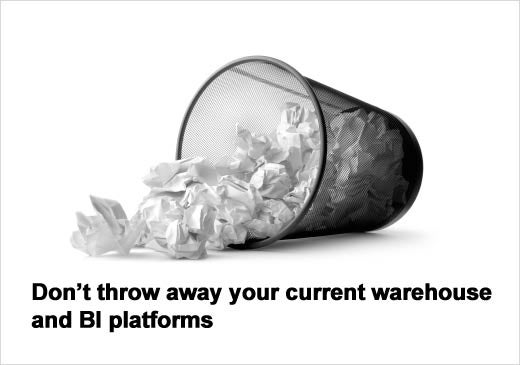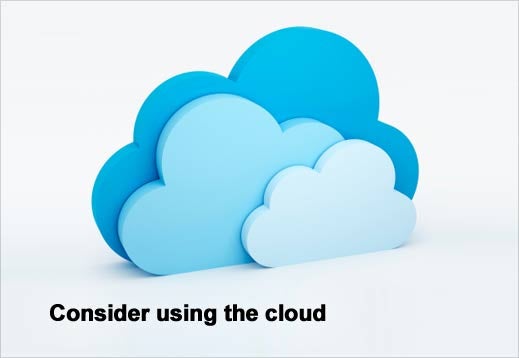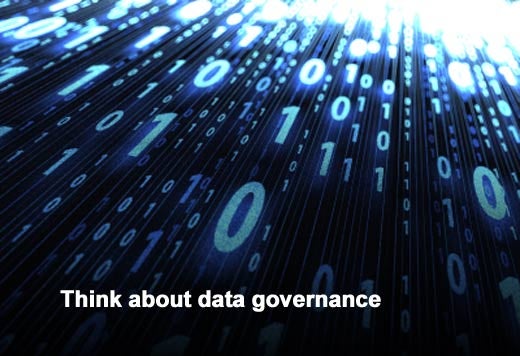Big Data enables organizations to target audiences much more precisely and at a much more personal level, thereby increasing customer loyalty. Many companies are beginning to realize the benefits of Big Data and are starting to use their customer data more effectively, leading to much better insight on consumer buying patterns/preferences etc. Ultimately, this is allowing companies to increase their cross selling opportunities and build better relationships with their customers. With the advent of Big Data, companies now have an opportunity to harness the power of real-time information and use analytics to interact with their consumers in real time.
Smart companies are realizing that unleashing the power of Big Data insights is the key to staying ahead. And, while it may seem like a daunting task, companies that are making Big Data and analytics a cornerstone to their sales and marketing strategy are undoubtedly ahead of their competition.
The benefits of Big Data should be clear: understanding your customer, improving customer loyalty and gaining competitive advantage. So how do you start? This slideshow features seven tips identified by Frank Palermo, senior vice president – Technical Solutions Group, Virtusa, to help you get started.
Click through for seven tips on getting started with Big Data, as identified by Frank Palermo, senior vice president – Technical Solutions Group, Virtusa.
This sounds simple but it’s an important first step. If you are not collecting the data that is being produced, there is no way to reap the benefits of the insights. At first, collect more than you think necessary. This doesn’t mean you need to keep everything long term, but you won’t know until you start to collect. The good news is that open source tools like Hadoop serve as good storage options, enabling organizations to cost-effectively store all their multi-structured data, such as Web server logs, sensor data, email, social feeds and extensible markup language (XML) data.
Perform a value analysis on the data you are collecting. If you analyzed the data more closely, which data sets have the potential to provide business advantages? What data could potentially give you a competitive advantage or help you better serve your customers? Once the data is organized and prioritized, you’ll be able to better decide which data sets you’d like to begin to analyze. It’s also a good idea to reduce the amount of data being processed into unique data sets. Tools such as Hadoop Map Reduce provide an abstraction framework for performing basic analytics.
Processing Big Data is not about replacing your data management systems; it’s about complementing those environments. Big Data processing tools (like Hadoop and others) will not replace traditional warehouse and BI platforms in your organization. In fact, Hadoop isn’t the only way to solve Big Data problems. Most traditional enterprise data warehouse platforms such as Teradata, Oracle Exadata, IBM Smart Analytics and EMC Greenplum all have solutions for dealing with large amounts of data. The bottom line is, ensure that you are integrating your Big Data strategy with your current data warehouse and BI platforms.
Instead of trying to figure out how much additional infrastructure you will need for processing and analyzing your Big Data, consider using the cloud. Many cloud-based solutions such as Amazon Web Services offer subscription-based services such as Elastic MapReduce (EMR) or DynamoDB (a NoSQL database) for processing Big Data. Google’s cloud application hosting service, AppEngine, also offers a MapReduce tool.
As you integrate Big Data into your BI framework, it is critical to provide self-service access for business users so they can benefit from the insights in Big Data. Providing intuitive, drag and drop fields to perform custom and iterative analysis is extremely powerful in helping to identifying where the opportunities are within Big Data. This will also help identify which data is most valuable and refine what is stored and processed.
Historically data governance is considered to be very late in the data management lifecycle. This frequently results in organizations storing redundant data. It is important to establish a business drive policy and oversight for Big Data early in the lifecycle. Business teams must own their Big Data and executives must provide adequate sponsorship. Proper business cases should provide clear ROI and highlight the depth of data analysis required, as well as the key metrics and analytics that can be implemented or extended with a Big Data project.
Understanding how to approach Big Data can be a daunting task for organizations, especially for enterprise data management teams who are consumed with the day-to-day data processing requirements. It’s important to set up a dedicated, parallel team to help. They will need to work with business stakeholders and existing data experts within the organization. New skills will be required not only in Hadoop but in other related technologies. Companies should consider turning to external consulting organizations to assist in developing a strategy for Big Data and to execute the initial implementations. This can accelerate the integration of a Big Data processing into your enterprise data management platforms.










